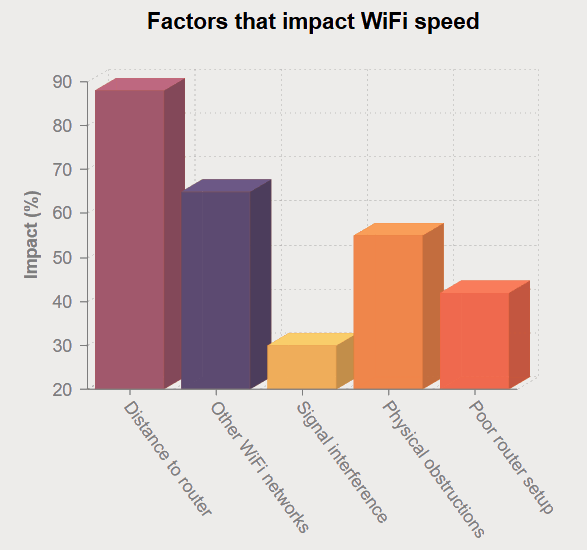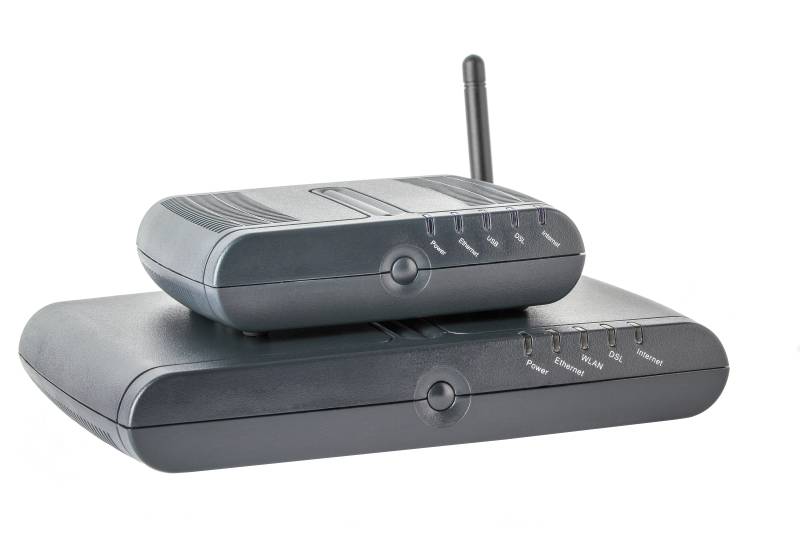www.WordSense.me
So, you are ready to install a new Wi-Fi network in your home - good job! But before doing that, there are a few things that you should know. Read this article and you will be able to set up your new router without having any problems.
© WordSense. All Rights Reserved.
How to install a new router
As you may know, lots of people have Wi-Fi related problems. And often times, it's all due to poor signal propagation and interference. George Hardesty from Data Alliance has provided a useful graphic which shows the top factors that lead to a poor Wi-Fi experience.

You should start the process by purchasing a modern router. To give you an example, the new 802.11ac standard is 300% faster in comparison with the previous Wi-Fi iteration. Well, the standard is not that "new", considering the fact that it was released in 2014. Still, it's good enough for most people's needs, being able to transfer data at speeds which can reach 1 Gbps.
In theory, of course. Because several users report that real-life speed is about half of that at most! Nevertheless, when you compare it with the first version of the wireless standard (802.11b), which had a maximum data transfer speed of 11 Mbps, you start to realize that we are spoiled these days.
My recommendation is to purchase the fastest router that you can afford. Just do it, and I guarantee that you will thank me later for that. Most people purchase the newest iPhone and Android smartphones, which are compatible with (and take advantage of) the latest Wi-Fi standards. So, if you don't purchase a modern router, your new shiny smartphone will be similar with a Ferrari that is forced to drive at 20 mph. Why? Because the router won't able to deliver the needed Internet access speed.

Be sure to purchase a good dual band router, because the new 5 GHz band is faster and less prone to interference. Lost of devices (even your microwave oven!) use the old 2.4 GHz band! Still, if you want to connect to the Wi-Fi network using devices that are far away from the router, you will appreciate the convenience of using the 2.4 GHz band, which provides a much bigger signal range. And by purchasing a dual band router, you will get the best of both worlds. The price for your new router should be somewhere in the $100-$300 range. Resist the temptation to purchase a $30 router - you'll get lots of disconnects, a poor signal range, and so on.
Okay, so you have purchased a great router - what's next? It's time to find the right spot for it, of course! Make sure to keep it away from water, even if it looks great on top of your fish tank ;)
Place the router on top of a wooden cabinet, for example. Keep it as high off the floor as possible, and away from metals, electronic devices and human bodies.
Hold on, we aren't ready to roll yet! Go to the farthest room where you want to have Internet access. Install one of the specialized Wi-Fi analyzer apps on your smartphone, tablet or laptop, and you will be able to measure signal strength. Then, have another person move the router a little bit (4-5 inches or so) and evaluate signal power again. You will be surprised to discover that minor changes can have such a huge impact when it comes to Wi-Fi signal strength.
As I am sure that you have noticed, your router has at least two or three antennae. By default, they are positioned vertically, sending a powerful Wi-Fi signal in all directions. However, if you need more signal in a particular room, you should orient the router antennas towards that room.
If you want to have a strong signal in a remote area, and your router is unable to deliver it no matter what you do, it is time to purchase an inexpensive $50 wireless signal repeater, which will solve the problem for good.







